A Great Way to Fly: The Singapore Airlines Story
Established in 1972, Singapore Airlines has earned a reputation as a well-recognised brand known for its impeccable service standards and luxurious in-flight experiences.
By Ang Seow Leng
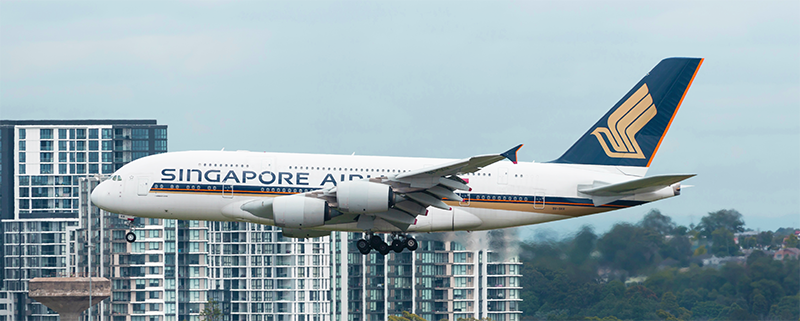
Today, Singapore Airlines (SIA) is regularly described as being among the best airlines in the world. And this is not a new phenomenon. In 2020, the Business Traveller Asia-Pacific Awards gave SIA the overall award for Best Airline and Best Asia-Pacific Airline for the 20th year running.1
It should come as no surprise that SIA consistently strives for excellence. From very early on, the company had been told that the stakes were high. In October 1972, about 10 months after SIA was incorporated, Prime Minister Lee Kuan Yew told the staff during the company’s inaugural dinner: “I set up Singapore Airlines to make profits. If you don’t make a profit, I am going to close down the airline.”2
While SIA was officially incorporated in January 1972, the airline actually traces its history to the formation of Malayan Airways, which was set up in October 1937. That company was jointly owned by British Imperial Airways, Ocean Steamship Company of Liverpool and Straits Steamship Company in Singapore.
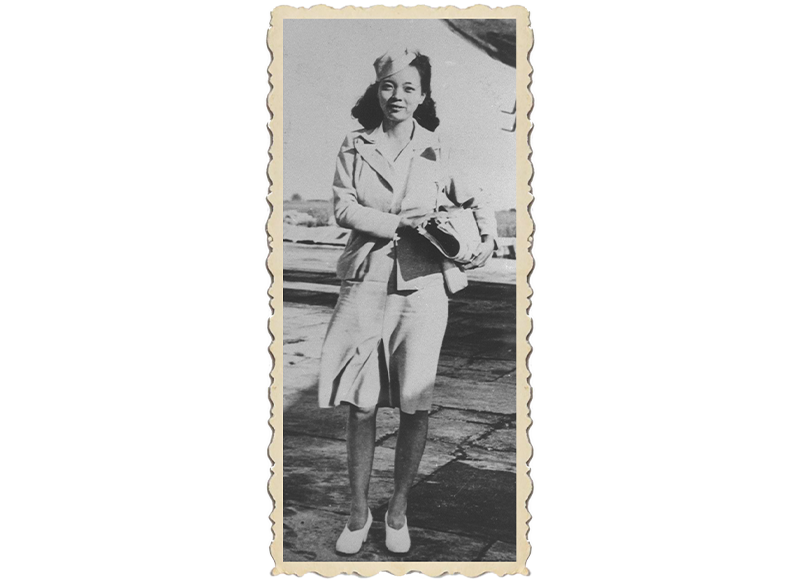
Malayan Airways was not the first local commercial airline to be set up in Malaya though. That honour belongs to Wearnes Air Services, a company owned by Wearne Brothers. When Kallang Airport was opened in June 1937 as Singapore’s first purpose-built civil airport, Wearnes Air Services immediately launched flights to Kuala Lumpur and Penang. As air travel became more popular, the Singapore incorporated company extended its air service to more places such as Ipoh and Kota Bahru.3
With Wearnes already on the scene, and given the small size of the market, Malayan Airways decided to hold off operations. The subsequent outbreak of war and the Japanese Occupation meant that Malayan Airways only made its maiden commercial flight a decade after being set up. On 1 May 1947, an Airspeed Consul aircraft took off from Singapore and flew passengers to Kuala Lumpur, Ipoh and Penang.4
Malayan Airways was renamed Malaysian Airways in 1963 following the formation of the Federation of Malaysia with the merger of the Federation of Malaya with Singapore, North Borneo (Sabah) and Sarawak. Three years later, the airline’s name was changed to Malaysia-Singapore Airlines after Singapore gained independence. At the time, the governments of Malaysia and Singapore had joint majority ownership of the airline.5
However, by 1971, the Singapore and Malaysian governments had developed differing aims for the airline. Singapore wanted Malaysia-Singapore Airlines to be a commercially viable international airline while Malaysia preferred to have a domestic airline. “The differences have become irreconcilable, and parting unavoidable,” said Finance Minister Hon Sui Sen in Parliament.6
In January 1972, the Singapore government announced that the new name of Singapore’s flag carrier would be Mercury Singapore Airlines.7 Malaysia, however, objected to this because it would mean that Singapore would end up keeping the initials MSA, thus benefitting from the brand recognition of the predecessor company.
The matter was eventually settled out of court in June that year. Under the agreement, Singapore would not use the name Mercury Singapore Airlines or the initials MSA. But the airline of each country could overprint its name as the Malaysian or Singapore successor in MSA advertisements so long as each airline paid the advertisement costs.8
In July 1972, Singapore announced that the new name of its airline would be Singapore Airlines and on 1 October, the airline’s first flight, SQ 108, bound for Kuala Lumpur, took off at around 6.15 am.9
A New Beginning
After Malaysia-Singapore Airlines was split up, SIA absorbed more than $180 million of its assets, including the Boeing fleet of five 707s and five 737-112s, and two Fokker F-27 Friendships. SIA also took over the Robinson Road headquarters, the Kriscom IBM computer reservation system, the engineering base and the airport flight kitchen in Paya Lebar, as well as the ramp servicing and transport equipment, and most of the overseas offices. The new airline operated the majority of the international routes of the former Malaysia-Singapore Airlines.10
SIA’s first managing director was Lim Chin Beng. His vision was for SIA to appeal to international travellers since Singapore did not have a domestic market. He said: “At that time, we consciously did not have local food on board because it was for the international travellers, not for Singapore travellers… So, the décor, the aircraft, the food, everything should be for the international travellers but with the Asian courtesy and the Asian touch.”11
The management under Lim immediately began negotiating for landing rights to ensure minimal disruptions to services. Two of the earliest landing rights agreements obtained were with Indonesia in September 1972 and Pakistan the following month.12
To expand and fly to new destinations, SIA needed more planes. In 1978, the airline made headlines because it signed a $2.1 billion agreement with Boeing in one of the largest ever single civilian aircraft deals at the time. The agreement was to purchase 10 Boeing 747s with an option to acquire three more, and four 727s with options to buy another two. In 1992, SIA showed that it was still willing to make big investments when it signed a contract for 20 Airbus Industrie A340-300 airplanes at a cost of $4.34 billion.13
All this has resulted in the airline consistently having a large, but young fleet of airplanes. Today, the SIA Group (including subsidiaries) has a combined passenger network covering almost 100 destinations.14
Branding and the Singapore Girl
The SIA logo was conceptualised by San Francisco design firm Landor Associates in 1972. The logo of a golden bird, against a deep midnight blue tail, was chosen to “[reflect] the modernity and sophistication” of SIA. All SIA aircrafts have been carrying this distinctive livery ever since with only a subtle change in 1987 when new gold, blue and yellow accents were introduced.15
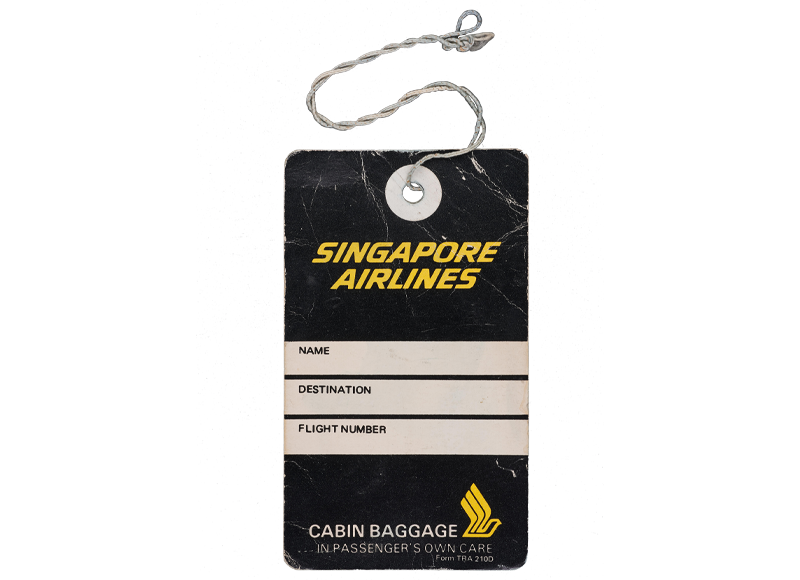
Arguably the most distinctive trademark about SIA is the form-fitting batik sarong kebaya uniform worn by its stewardesses. The uniform was designed by French couturier Pierre Balmain in 1968 for Malaysia-Singapore Airlines. In 1974, Balmain made minor revisions to the uniform, retaining the air stewardess sarong kebaya but introducing new three-piece outfits for the ground stewardesses and female ticketing staff. The sarong kebaya – with its vibrant coloured floral motifs and patterned border batik print – is tailor-made for each crew member.16
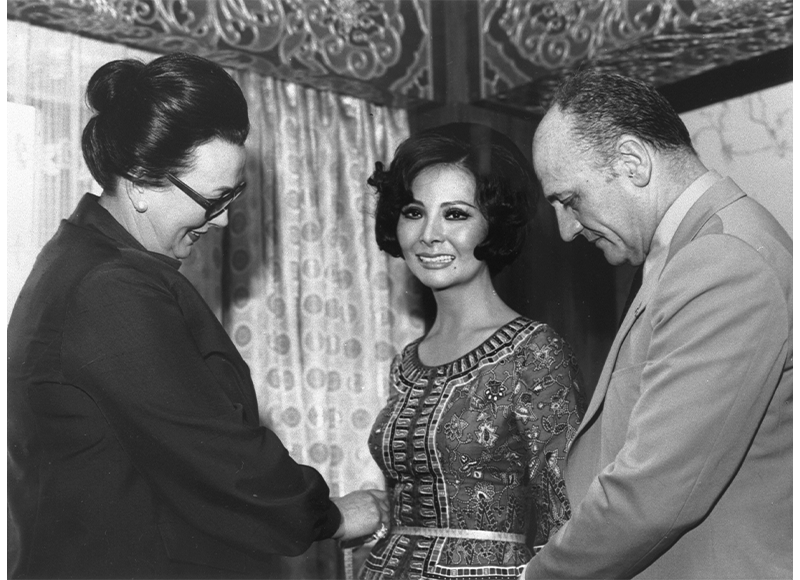
Batey Advertising developed SIA’s memorable branding, focusing on its key inflight service, the iconic “Singapore Girl” and the airline slogan “Singapore Airlines – A Great Way to Fly”. The agency has won several international awards for this campaign.17
Such was the fame of the Singapore Girl that when Madame Tussaud’s wax museum in London wanted to have a waxwork figure to reflect the growing popularity of international travel, it chose to use an SIA stewardess, modelled after stewardess Lim Suet Kwee.18 A refresh of the Singapore Girl wax figure in 2015 featured Nur Surya Mohamed Ambiah, who was selected from among 4,500 female crew members.19
Airline food is typically a punchline for many a joke. SIA, however, takes food seriously and places an emphasis on the preparation, choice of cuisine and presentation of meals. In 1998, the airline pioneered the concept of assembling an international cast of chefs on the Singapore Airlines International Culinary Panel to create up-to-date menus reflecting the latest food trends.20 In 2021, SIA won the Skytrax World Airline Award for Best Economy Class Airline Catering.21
Trials and Tribulations
In the early years, SIA had to work hard to obtain traffic and landing rights, which were not easily attainable. Initially, the British government did not allow SIA to land in London. Managing Director Lim Chin Beng recalled that the negotiations went on “for months and months and months”.22 SIA eventually took a huge gamble, with support from the Singapore government, to serve notice to terminate its agreement with the British Overseas Airways Corporation (now known as British Airways) that allowed the airline to land in Singapore.
Lim explained that “under all air services agreement, there is a clause to say that you can give 12 months’ notice of termination… So, in 12 months’ time, if there is no agreement, they have to stop operating to Singapore”.23 The unions at the airport also applied pressure by going slow on British Overseas Airways Corporation aircrafts.
The British high commissioner to Singapore, Arthur de la Mare, went to see Prime Minister Lee Kwan Yew about this and the latter told him “to get his government to be reasonable. A British airline could land in Singapore but a Singapore airline was denied landing rights in London”. Within weeks, SIA finally managed to obtain landing rights in London to fly on one of the main trunk routes of the world: London-Singapore-Sydney. “Once we did that, all the European countries got in line,” said Lim. “So, we got London, we got Paris.”24
The newly established airline was also labelled as an upstart, a maverick and a pirate.25 In 1981, West Germany waged a campaign against SIA for selling discounted tickets. SIA offices in Frankfurt and Dusseldorf were reportedly visited by German tax officials on five occasions, and there were also increased frequencies of checks on SIA flights, resulting in delays and embarrassed passengers. Talks between Singapore and West German civil aviation officials eventually put an end to the disturbances.26
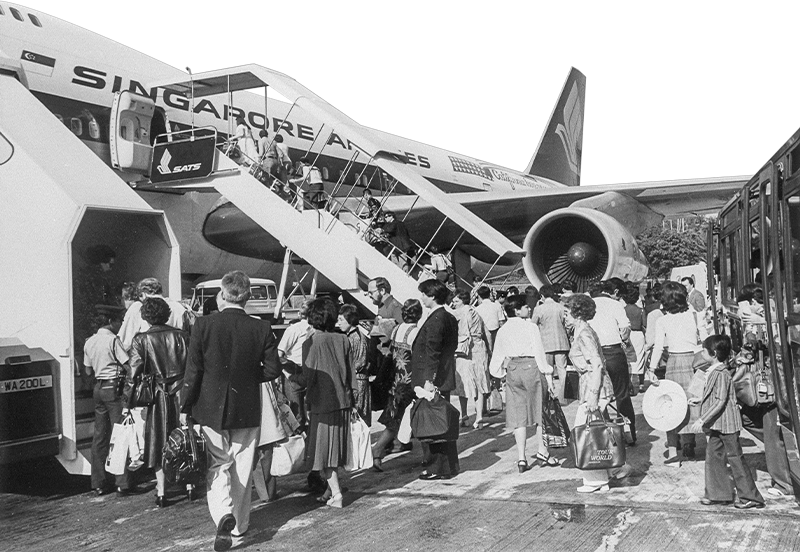
Not all of SIA’s challenges were from abroad. In 1980, members of the Singapore Airlines Pilots Association (SIAPA) sought to exert pressure on the airline to accede to their demands for higher wages, allowances and other benefits by resorting to work-to-rule, go-slows and unnecessary medical leave. These caused disruptions to flight schedules and harmed SIA’s reputation and operations.27
During that period, 30 pilots disrupted 16 scheduled flights through their refusal to work beyond the 12-hour duty time limit laid down under the company collective agreement. After the dispute was referred to the Industrial Arbitration Court, two further flight delays continued.28
On 1 December 1980, Prime Minister Lee Kuan Yew intervened and warned the SIAPA executives, telling them that he did not want to do them in but he “won’t allow anyone to do Singapore in”. Subsequently, some of the SIAPA officials were charged with illegal industrial action and SIAPA was deregistered.29
In 2003, some 23 years later, another major dispute over wages broke out and Lee, now Senior Minister, stepped in again. He warned SIA management and the pilots that if the matter continued to escalate, there would be “broken heads”.30 The Ministry of Manpower and the Industrial Arbitration Court mediated between SIA and the Airline Pilots’ Association Singapore to eventually reach an agreement on wage cuts, no-pay leave and compensation payment.31
On 26 March 1991 – in an event that gripped the nation – flight SQ 117 was hijacked shortly after departing Kuala Lumpur after 9 pm. Carrying 114 passengers and 11 crew members, the Airbus A310 landed at Changi Airport at 10.24 pm. The leader of the four hijackers demanded to speak with the Pakistani ambassador to Singapore and former Pakistani Prime Minister Benazir Bhutto, as well as the release of jailed members of the Pakistan People’s Party in Pakistan.
They also demanded that the plane fly to Sydney after refuelling. The destination was later changed multiple times to Iraq, Libya, Brunei and Indonesia. By early dawn, the hijackers threatened to kill one passenger every 10 minutes if their demands were not met.32
As the negotiations showed signs of breaking down, an elite rescue team stormed the plane and in a decisive 30-second sweep, killed all four hijackers without injuring any of the hostages.33
SIA had to deal with fatal accidents as well. The first serious accident occurred on 31 October 2000 at Chiang Kai-shek International Airport (now Taiwan Taoyuan International Airport) in Taipei. Flight SQ 006 was on its way to Los Angeles from Singapore via Taiwan when it crashed on a closed runway, destroying the aircraft and killing 83 people.34
This, however, was not its most serious incident involving the company. That had taken place three years prior, when a plane from SIA’s regional arm, SilkAir, suffered a fatal crash. Flight MI 185 was on its way to Singapore from Jakarta on 19 December 1997 when it lost altitude from 35,000 ft and nosedived into the Musi River near the city of Palembang in South Sumatra, Indonesia. That crash killed all 104 people on board.35
Adapting to Circumstances
In the late 1990s, budget airlines became popular and airlines like Malaysia’s AirAsia and Australia’s Jetstar ushered in a new era of air travel by offering cheaper tickets.36
SIA dipped its toes into the water by setting up its own low-cost subsidiary, Scoot, which began flying in June 2012. Budget airline Tiger Airways, which began operating as an independent airline in September 2004, also became a subsidiary of SIA Group in 2014.37 In July 2017, Tigerair merged with Scoot, operating under the Scoot brand.38 SIA’s subsidiary SilkAir, which served the regional routes, merged with SIA in September 2021.39
In 2020, SIA encountered what can be described as one of the most challenging moments in its history. The Covid-19 pandemic forced global travel to a standstill, and the airline reported its first net loss of $212 million in its 48-year history for the financial year ending in March 2020.40 To help cope with the short-term liquidity risk, SIA reached out to an unprecedented number of sources for funding and raised $22.4 billion in liquidity between April 2020 and May 2022, including $15 billion from shareholders.41
In October 2020, with most of the planes grounded, SIA transformed several A380 double-decker superjumbo jets into “Restaurant A380” offering Singapore residents a unique dining experience, and also provided the airline’s signature meals delivered to homes. Singapore residents could also go for guided tours at the SIA training facility where they had a chance to interact with pilots and cabin crew, and even check out the flight simulators at an extra charge.42
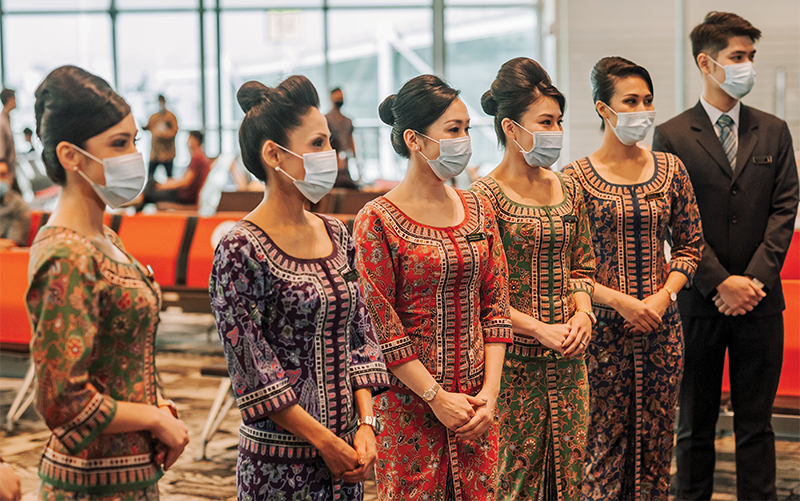
Flying Once Again
With the easing of restrictions and borders opening, air travel has begun to pick up. In December 2021, SIA announced a net profit of $85 million during the third quarter since the onset of the pandemic, thanks to expanded vaccinated travel lane arrangements and cargo revenue.43 In May 2022, the airline reported a lower net loss of $962 million for the financial year ending in March 2022, compared with $4.3 billion a year earlier. Revenue also increased to $7.6 billion, from $3.8 billion.44
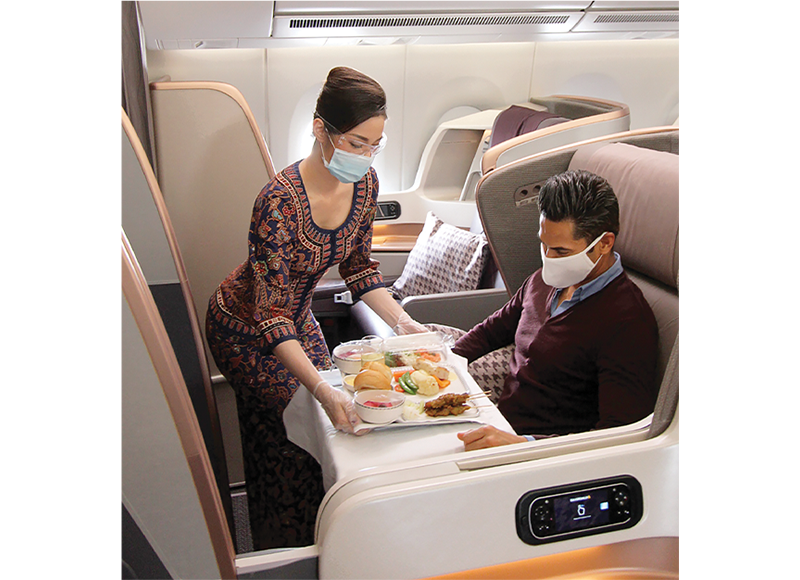
In an interview with the Straits Times in May 2022, chief executive officer of SIA, Goh Choon Phong, said that in the second quarter of 2022, the airline was at about 61 percent of pre-pandemic capacity compared to an average of 20 percent of pre-pandemic capacity for the other airlines in this region. He told the newspaper he was confident that the rapid growing economies in Asia would foster strong demands for business travel.45
The opening of SIA’s new flagship SilverKris and KrisFlyer Gold lounges at Changi Airport Terminal 3 in May 2022 also showed SIA’s “confidence in Singapore’s future as a pre-eminent global air hub”.46 So long as SIA sticks to its guiding principle of striving for excellence, it will undoubtedly continue to be a great way to fly.
 Ang Seow Leng is a Senior Librarian with the National Library, Singapore. Her responsibilities include managing the National Library’s collections, developing content as well as providing reference and research services.
Ang Seow Leng is a Senior Librarian with the National Library, Singapore. Her responsibilities include managing the National Library’s collections, developing content as well as providing reference and research services.NOTES
-
“Business Traveller Asia-Pacific Awards 2020 Results,” Business Traveller Asia-Pacific, 13 October 2020. https://www.businesstraveller.com/awards/business-traveller-asia-pacific-awards-2020-results/; “World’s Best Airline Cabin Crew,” Skytrax World Airline Awards, accessed 16 June 2022, https://www.worldairlineawards.com/worlds-best-airline-cabin-crew-2021/. ↩
-
Lim Chin Beng, oral history interview by Patricia Lee, 5 September 2000, transcript and MP3 audio, Reel/Disc 2 of 3, National Archives of Singapore (accession no. 002358), 20. ↩
-
Allen, SIA: Take-off to Success, 21–22; Christopher Fyfe, Wheels in Malaya: The Wearne Brothers and Their Company (Claremont, W. Aust.: Lana Press, 2002), 121–30. (From National Library, Singapore, call no. RSING q629.2220922 FYF) ↩
-
“Ten Proud Years: Great Day in the History of Malayan Airways, 1947–1957,” Straits Times, 1 May 1957, 12; “Malayan Air Service Daily From May 1,” Malaya Tribune, 12 April 1947, 5. (From NewspaperSG); Allen, SIA: Take-off to Success, 19. ↩
-
“Malaysian Airways: New Name of Your National Airline,” Straits Times, 30 November 1963, 17; “Up Goes the Flag,” Straits Times, 17 September 1963, 1; “MAL Is Now MSA,” Straits Times, 31 December 1966, 1. (From NewspaperSG) ↩
-
“MSA Split Unavoidable,” Straits Times, 23 March 1971, 3. (From NewspaperSG) ↩
-
“MSA It Is!,” Straits Times, 29 January 1972, 1. (From NewspaperSG) ↩
-
“Singapore Drops ‘MSA’,” Straits Times, 28 June 1972, 1; “Goodwill at Last,” Straits Times, 28 June 1972, 12. (From NewspaperSG) ↩
-
Arthur Richards and Rita Loong, “Big Champagne Party by Union to Mark the Birth of SIA,” Straits Times, 1 October 1972, 7. (From NewspaperSG) ↩
-
Goh Yong Kiat, Where Lions Fly: 100 Years of Aviation in Singapore (1911–2011) (Singapore: Straits Times Press Reference, 2012), 95. (From National Library, Singapore, call no. RSING 387.7095957 GOH); “MSA It Is!” ↩
-
“SIA-Garuda Air Rights Signing Today,” Straits Times, 14 September 1972, 28; “SIA Will Fly to Karachi This Month,” Straits Times, 10 October 1972, 10. (From NewspaperSG) ↩
-
Bill Campbell, “SIA’s $2 Bil Wingspread,” Straits Times, 10 May 1978, 1. (From NewspaperSG); Goh, Where Lions Fly, 108, 136. ↩
-
“SIA Group Cuts Full Year Net Loss By 78%, Posts Second Half Operating Profit As Travel Demand Returns,” Singapore Airlines, 18 May 2022, https://www.singaporeair.com/saar5/pdf/Investor-Relations/Financial-Results/News-Release/nr-q4fy2122.pdf; Natasha Ganesan, “SIA Group’s Passenger Traffic Continues to Rise in May Amid Strong Recovery in Air Travel,” Channel NewsAsia, 15 June 2022, https://www.channelnewsasia.com/singapore/singapore-airlines-scoot-passenger-traffic-may-2022-covid-19-travel-2748461. ↩
-
Nancy Byramji, “Boeing 707 Gets First SIA Logo of Golden Bird,” Straits Times, 5 August 1972, 8; Martin Soong, “SIA Shows Its New Flying Colours,” Business Times, 29 April 1987, 2. (From NewspaperSG) ↩
-
“SIA Airgirls to Put on That MSA Look,” Straits Times, 27 July 1972, 2; “Balmain Keeps It Down to Earth,” Straits Times, 18 August 1974, 8. (From NewspaperSG); Danielle Wightman-Stone, “Singapore Airlines Celebrates 50 Years of Pierre Balmain,” FashionUnited, 19 November 2018, https://fashionunited.uk/news/fashion/singapore-airlines-celebrates-50-years-of-pierre-balmain/2018111940028. ↩
-
“S’pore Firm Wins 12 International Ad Awards,” Straits Times, 1 April 1987, 16; “SIA’s Stopover Ad a Winner,” Straits Times, 20 May 1987, 14. (From NewspaperSG) ↩
-
“Singapore Girl in Wax for Madame Tussaud’s,” Straits Times, 21 March 1993, 1. (From NewspaperSG) ↩
-
Jocelyn Lee, “New Singapore Girl Wax Figure Modelled After Yummy Mummy Chosen Out of 4,500 SIA Stewardesses,” New Paper, 4 March 2015, https://www.tnp.sg/news/others/new-singapore-girl-wax-figure-modelled-after-yummy-mummy-chosen-out-4500-sia. ↩
-
Sylvia Tan, Above & Beyond: A Collection of Recipes from the Singapore Airlines International Culinary Panel (Singapore: Marshall Cavendish Cuisine, 2010), 13. (From National Library, Singapore, call no. RSING 641.59 ABO) ↩
-
“World’s Best Economy Class Airlines 2021,” Skytrax World Airline Awards, accessed 16 June 2022, https://www.worldairlineawards.com/worlds-best-economy-class-airlines-2021/. ↩
-
Lee Kuan Yew, From Third World to First: The Singapore Story, 1965–2000: Memoirs of Lee Kuan Yew (Singapore: Times Editions: Singapore Press Holdings, 2000), 229. (From National Library, Singapore, call no. RSING 959.57092 LEE); Lim, interview, 5 Sep 2000, 16. ↩
-
Ken Hickson, Mr SIA: Fly Past (Singapore: World Scientific Publishing, 2014), 83–84; Lim, interview, 5 Sep 2000, 17. ↩
-
Lim, interview, 5 Sep 2000, 18; Agnes Wee, “Germany Accuses SIA of Undercutting,” Business Times, 13 November 1981, 1; “An End to the Turbulence,” Straits Times, 12 December 1981, 16. (From NewspaperSG) ↩
-
“Time to Cool Frayed Nerves,” Business Times, 2 December 1980, 6; “Troubled Sky,” Straits Times, 5 November 1980, 14. (From NewspaperSG) ↩
-
Ahmad Osman, “SIA Dispute: PM Steps In,” Straits Times, 27 November 1980, 1. (From NewspaperSG) ↩
-
“Shades of the Past,” Straits Times, 21 December 2003, 8. (From NewspaperSG); Hickson, Mr SIA, 56. ↩
-
“Shades of the Past”; Lydia Lim, “Govt Acting to Prevent ‘Broken Heads’ at SIA,” Straits Times, 2 December 2003, 1. (From NewspaperSG) ↩
-
Ministry of Information, Communications and the Arts, “In Principle Agreement Mediated by MOM Reached Between Singapore Airlines Ltd (SIA) and the Air Line Pilots Association Singapore (ALPA-S),” press release, 30 June 2003, National Archives of Singapore (document no. 2003063003); Ministry of Information, Communications and the Arts, “Improving Labour Relations in Singapore Airlines (SIA): Prime Minister’s Office Press Statement,” press release, 30 November 2003, National Archives of Singapore (document no. 2003113001). ↩
-
Bilveer Singh, Skyjacking of SQ 117: Causes, Course and Consequences (Singapore: Crescent Design Associates, 1991), 41, 48. (From National Library. Singapore, call no. RSING 364.154095957 BIL) ↩
-
“Thunderbolt: The SQ117 Story,” Public Service Division, Prime Minister’s Office, accessed 16 June 2022, https://www.psd.gov.sg/heartofpublicservice/our-people/4-24-7/thunderbolt-the-sq117-story/. ↩
-
Singapore. Ministry of Transport, Analysis of the Accident to Singapore Airlines Flight SQ 006, Boeing 747-412, 9V-SPK at Chiang Kai-Shek Airport, Taipei, Taiwan, on 31 October 2000 (Singapore: Ministry of Transport, 2002), iv. (From National Library, Singapore, call no. RSING 363.124650951249 SIN); “Crash Tarnishes Clean Record,” BBC News, 1 November 2000, http://news.bbc.co.uk/2/hi/asia-pacific/1001007.stm. ↩
-
National Transportation Safety Committee, Investigation of Aircraft Accident SilkAir Flight MI 185 Boeing B737-300, 9V-TRF, Musi River, Palembang, Indonesia, 19 December 1997: Final Report (Indonesia: Department of Communications, 2000), 1. (From National Library, Singapore, call no. RSING 363.12465 INV) ↩
-
Mike Eggleton, “The Surge of Low-cost Carriers in Asia,” Advito, accessed 17 June 2022, https://www.advito.com/resources/the-surge-of-low-cost-carriers-in-asia/. ↩
-
Karamjit Kaur, “Tiger Airways Picks New Chief – An Airline Veteran,” Straits Times, 11 November 2004, 6; Steve Thomson, “Get Outta Here with Scoot,” Straits Times, 11 June 2012, 6. (From NewspaperSG); Singapore Airlines, The Path of Progress: Annual Report FY2014/15 (Singapore: Singapore Airlines, 2015), 13, https://www.singaporeair.com/saar5/pdf/Investor-Relations/Annual-Report/annualreport1415.pdf. ↩
-
Ann Williams, “Tigerair to Operate Under Scoot Brand from July,” Straits Times, 15 June 2017, https://www.straitstimes.com/business/companies-markets/tigerair-to-operate-under-scoot-brand-from-july-25. ↩
-
Singapore Airlines, Annual Report FY2021/22 (Singapore: Singapore Airlines, 2022), 50, https://www.singaporeair.com/saar5/pdf/Investor-Relations/Annual-Report/annualreport2022.pdf. ↩
-
“Singapore Airlines Posts First Annual Net Loss in 48-year History After COVID-19 Cripples Demand,” Channel NewsAsia, 14 May 2020, https://www.channelnewsasia.com/business/singapore-airlines-sia-q4-full-year-results-covid-19-coronavirus-940016. ↩
-
Ven Sreenivasan, “Exclusive Interview with SIA CEO: How the National Carrier Powered Through the Covid-19 Pandemic,” Straits Times, 31 May 2022, https://www.straitstimes.com/business/all-set-to-fly-high-how-sia-powered-through-an-unprecedented-crisis-during-the-covid-19-pandemic. ↩
-
Lau Kong Cheen, “A Great Way to Fly – Will SIA’s Brand Be Affected by Its New Dining Service and Tours?” Today, 9 October 2020, https://www.todayonline.com/commentary/great-way-fly-will-sias-brand-be-affected-its-new-dining-service-and-tours. ↩
-
Claudia Tan, “SIA Posts First Quarterly Net Profit of S$85m Since Onset of Pandemic,” Business Times, 24 February 2022, https://www.businesstimes.com.sg/companies-markets/sia-posts-first-quarterly-net-profit-of-s85m-since-onset-of-pandemic. ↩
-
Sreenivasan, “Exclusive Interview with SIA CEO: How the National Carrier Powered Through the Covid-19 Pandemic.” ↩
-
Karamjit Kaur, “Plan Early to Avoid Peak Prices: SIA CEO Goh Choon Phong,” Youtube, 29 May 2022, https://youtu.be/N-siNYaxQoA. ↩
-
“Exceptional Experiences Await Singapore Airlines Customers at All-new SilverKris and KrisFlyer Gold Lounges,” Singapore Airlines, 30 May 2022, https://www.singaporeair.com/en_UK/at/media-centre/press-release/article/?q=en_UK/2022/April-June/ne0522-220530. ↩

